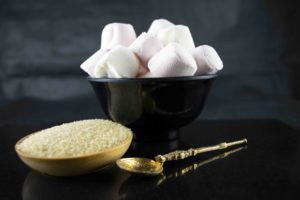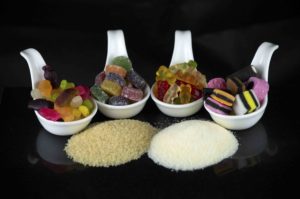Are you thinking of making your own marshmallows – maybe just for fun, or maybe as a business?
If so, then you probably have some questions, such as:

- Should I use powder or leaf gelatine?
- What strength of gelatine should I use?
- Does it matter if I use Beef or Pork gelatine?
- How do I use the gelatine?
Should I use powder or leaf gelatine?
I always use powdered gelatine instead of leaf gelatine, as powdered gelatine is easier to use than leaf gelatine.
What strength of gelatine should I use?
- The gel strength of the gelatine is what controls the setting and texture of the product. High strength gelatines set more quickly and are more elastic in texture. These higher strength gelatines are used extensively in the manufacture of marshmallows. (We can supply both Pork and Beef Gelatine powder in 240 bloom strength, as well as a 150 bloom Fish gelatine)

Does it matter if I use Beef or Pork gelatine?
- Pork gelatines have a much higher foam capacity compared to Beef gelatines, and are able to produce more stable mallows, and much easier.
- Care must be taken with Pork gelatine not to over whisk the mixture, as the volume of foam produced means that the texture of the marshmallow might be too light and fluffy.
- If you are using Beef gelatine the amount of Glucose syrup will affect the foaming performance of the gelatine, and too much Glucose syrup may even lead to the total collapse of the foam. A formulation based on invert sugar is safer.
How do I use the gelatine?
One of my other posts will answer this question
Useful Information:
There are many factors that control the commercial production of marshmallows:
eg Foaming behaviour – Gelatine is a water soluble protein which is also soluble in a high sugar solution. As such it is able to emulsify air and liquid together (i.e. create foam). This property if affected by whether pork or beef gelatine is used, and the quantity of glucose syrup used (see above). When adding ingredients to the foam, take extra care as every ingredient that you add will affect the mallow foam.
.
